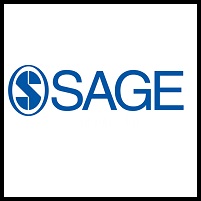| مشخصات مقاله | |
| انتشار | مقاله سال ۲۰۱۸ |
| تعداد صفحات مقاله انگلیسی | ۱۳ صفحه |
| هزینه | دانلود مقاله انگلیسی رایگان میباشد. |
| منتشر شده در | نشریه Sage |
| نوع مقاله | ISI |
| عنوان انگلیسی مقاله | Internal Auditing in India and China: Some Empirical Evidence and Issues for Research |
| ترجمه عنوان مقاله | حسابرسی داخلی در هند و چین: برخی شواهد تجربی و مسائل مربوط به تحقیق |
| فرمت مقاله انگلیسی | |
| رشته های مرتبط | حسابداری |
| گرایش های مرتبط | حسابرسی |
| مجله | مجله حسابداری، حسابرسی و امور مالی – Journal of Accounting Auditing & Finance |
| دانشگاه | Indian Institute of Management Bangalore – Karnataka – India |
| کلمات کلیدی | حسابرسی داخلی، هند، چین، حکمرانی، کنترل داخلی |
| کلمات کلیدی انگلیسی | internal audit, India, China, governance, internal control |
| کد محصول | E7934 |
| وضعیت ترجمه مقاله | ترجمه آماده این مقاله موجود نمیباشد. میتوانید از طریق دکمه پایین سفارش دهید. |
| دانلود رایگان مقاله | دانلود رایگان مقاله انگلیسی |
| سفارش ترجمه این مقاله | سفارش ترجمه این مقاله |
| بخشی از متن مقاله: |
| Introduction
Legislators and regulators have often emphasized the important role played by audit committees in the financial reporting process (European Commission, 2014; Securities and Exchange Commission [SEC], 1999, 2003; U.S. Senate, 2002). As actual independence and, perhaps more importantly, perceptions of financial statement users about the independence of the directors from management are essential, the SEC and regulators around the world have been pushing for audit committees to consist of solely independent directors. While audit committee director independence has many benefits—both actual and perceived—such independence also introduces information asymmetries between the directors and management (Scarbrough, Rama, & Raghunandan, 1998). Internal auditing can be an effective mechanism in mitigating such information asymmetries. The Institute of Internal Auditors (IIA, 2016) defines internal auditing as follows: Internal auditing is an independent, objective assurance and consulting activity designed to add value and improve an organization’s operations. It helps an organization accomplish its objectives by bringing a systematic, disciplined approach to evaluate and improve the effectiveness of risk management, control, and governance processes. Thus, one of the primary roles of internal auditing is in assessing and reporting on internal controls, as well as overall risk management. Hence, an effective internal audit function (IAF) is a useful mechanism in the checks and balances of effective corporate governance and can be an invaluable resource for audit committees, as well as management and external auditors, in effectively discharging their responsibilities and fulfilling their governance mandate (Bishop, Hermanson, Lapides, & Rittenberg, 2000; Gramling, Maletta, Schneider, & Church, 2004; Scarbrough et al., 1998). For example, the National Association of Corporate Directors (1999) noted that ‘‘the audit committee can look to today’s internal auditing function to provide independent, objective assurance and consulting activities designed to add value and improve the organization’s operations’’ (p. 47). Hence, it is not surprising that many private-sector blue ribbon panels have emphasized the role of an effective IAF to ensure high-quality corporate financial reporting. For example, the National Commission on Fraudulent Financial Reporting (NCFFR, 1987) recommended that ‘‘public companies should maintain an effective internal audit function staffed with an adequate number of qualified personnel’’ as part of their efforts to prevent fraudulent financial reporting. Recognizing such importance of internal auditing, Section 303A.07(c) of the NYSE listing manual specifies that ‘‘each listed company must have an internal audit function. |
